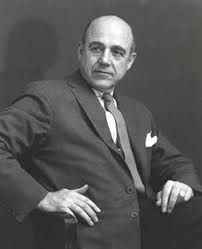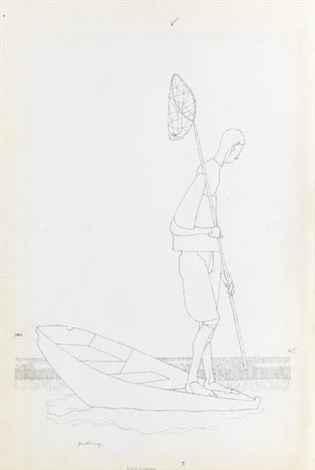Inquire about Soft Crabbing 1960 by Robert Gwathemy
Share Soft Crabbing 1960 by Robert Gwathemy
Robert Gwathemy
-
Title: Soft Crabbing 1960 -
Inventory#: GW000001 -
Size: 20" x 14" -
Frame Size: 27" x 21" -
Medium: Pencil -
Price: Price On Request

Robert Gwathmey (American, 1903–1988) “Art itself is produced, in part, from the compulsion to express, a unique attribute of man. It is a desire to find and separate truth from the complex of lies and evasions in which he lives.” — Excerpt from "Art for Art's Sake?" American Art 7. Robert Gwathmey was a social realist painter recognized for his depictions of rural life in the American south. Born and raised in Richmond, Virginia, an eighth generation Virginian, Gwathmey is regarded as the first white American artist to produce dignified representations of black Americans through painting. A lifelong social activist, Gwathmey was a firm believer that artistic expression and social issues could not be separated. Gwathmey was interested in documenting the human condition, primarily as it pertained to the people of his native south. He sought to portray human subjects as he saw them, through observation, without over generalizing or romanticizing. Though most well known for his iconic realist portraits of black southern agricultural workers, Gwathmey produced portraits of both whites and blacks in urban and rural landscapes, as well as still lifes. Gwathmey’s signature style employs abstraction in the service of social realism. Through utilizing geometric shapes with bold black outlines and flat applications of color, Gwathmey created two-dimensional representations, reminiscent of stained glass. The figures featured in Gwathmey’s paintings have a powerful presence. They are often shown surrounded by minimal, stark backgrounds with linear, geometric details that merely suggest a room or rows of tobacco in a field. Gwathmey was unimpressed by the Abstract Expressionists, who he believed acted irresponsibly in their disregard for artistic tradition and the harsh realities of modern life. He brazenly defended representational art alongside fellow realist painters Edward Hopper, Jack Levine, Isabel Bishop, and Raphael Soyer. After a year of business classes at North Carolina State College in Raleigh, Gwathmey began studying first at the Maryland Institute of Design in Baltimore and subsequently attended the Pennsylvania Academy of Fine Arts in Philadelphia in 1926. During this time, he met fellow southerner, photographer Rosalie Hook who he later married in 1935. Together they had a son, Charles, who went on to become a successful architect, most famous for his renovation of Frank Lloyd Wright’s Guggenheim Museum in New York City. While the production of Gwathmey’s work was largely fueled by the social injustices of American life in the mid 1900s, his formal artistic interests were shaped by his study of European modernists such as Henri Matisse, Vincent Van Gogh, Pablo Picasso, and Rufino Tamayo. He admired French satirist Honoré Daumier and was influenced by realist painter Jean-François Millet for his depictions of nineteenth century rural French workers. Gwathmey began developing his signature style in the late 1930s and early 1940s, and began his career as a art instructor teaching at the Carnegie Institute of Technology in Pittsburgh in 1939. During the war, Gwathmey became active in Artists for Victory, an organization of artist’s whose mission was to assist the war effort. By the 1950s, Gwathmey had become recognized throughout the United States for his distinctive style. The artist’s social realist depictions captured audiences and art collectors despite competition from the increasingly popular Abstract Expressionist movement. In 1942, Gwathmey began teaching studio courses at Cooper Union in New York City, where he stayed until his retirement in 1968. Among his many students were painter and comic strip illustrator Alvin Carl Hollingsworth and feminist artist Faith Ringgold who intertwined her artistic expression with social issues in her storytelling quilts as she had seen Gwathmey do. In 1944, Gwathmey received a Rosenwald Foundation fellowship to spend the summer living and working with sharecroppers on a tobacco farm near Rocky Mount, North Carolina. By partaking in the work himself, he developed a genuine understanding of the type of manual labor required to harvest tobacco. This experience lent an authenticity to his subsequent portraits of tobacco workers and landscapes of North Carolina. Gwathmey also began studying the complex structures of field flowers, which led to an interest in painting still lifes. Gwathmey’s wife photographer Rosalie Hook Gwathmey, who accompanied her husband, took many photographs during the trip that later served as visual aids in the artist’s studio work. Gwathmey’s experiences during his fellowship summer became the foundation of his most iconic work, portraits of mostly black agrarian workers both hard at work in the fields and at rest, oftentimes singing and playing music. Always telling of the social conditions and racial tensions of the mid-twentieth century American South, Gwathmey’s portraits emphasize an admiration for the physical work and communal lifestyle of agrarian subcultures, despite a rapidly modernizing world. Gwathmey retired from his teaching position at Cooper Union in 1968 and settled with his wife in the Village of Amagansett on Long Island. Aside from a brief teaching job at Boston University in the winter of 1968-69, Gwathmey spent the rest of his life concentrating on his artwork and political activism, remaining especially committed to civil rights, workers rights and the peace movement. Despite declining health and a diagnosis of Parkinson’s disease, Gwathmey continued to paint until four years before his death in 1988. His legacy as a master painter of the American South has since been upheld in various posthumous retrospectives, including at the Butler Museum of American Art in Youngstown, Ohio, the Telfair Art Museum in Savannah, Georgia, the Pennsylvania Academy of Fine Art, as well as the Virginia Historical Society in the artist’s native Richmond. Written and compiled by Lauren A. Zelaya Chronology 1903 Born on January 24th in Richmond, VA 1924-1925 Attends North Carolina State College, Raleigh 1925 Worked on a freighter, traveling to ports in Europe and the Americas 1925-26 Attends courses at the Maryland Institute of Design in Baltimore 1926-30 Receives Cresson summer fellowships to study abroad in Europe 1930-37 Teaches at Beaver College in Glenside, PA 1935 Marries Rosalie Hook of Charlotte, NC 1938 Destroys nearly all of his previous work; birth of son, Charles 1939 Wins competition for solo show at the ACA Gallery in New York City 1941 Finishes commission for mural The Countryside at post office in Eutaw, AL 1939-42 Teaches at the Carnegie Institute of Technology, Pittsburgh, PA 1941 Solo show at the ACA Gallery in New York City 1941-61 Represented by Herman Baron and the ACA Gallery 1942-68 Teaches life drawing courses at the Cooper Union School of Art, New York City 1942-69 FBI surveillance of Gwathmey’s political activities 1944 Receives Rosenwald Foundation fellowship to spend the summer living and working with share croppers on a tobacco farm in North Carolina 1944-55 Settles in New York City on 68th Street and Central Park West 1946 Solo show at the ACA Gallery in New York City Joint exhibition with Rosalie Hook Gwathmey at Virginia Museum of Fine Arts 1946-1949 Teaches painting at the New School for Social Research, New York 1949-50 Lives in Paris and travels throughout Europe 1953 Published short-lived publication Reality: A Journal of Artists’ Opinions alongside realist painters Edward Hopper, Jack Levine, Isabel Bishop and Raphael Soyer 1957 Produced series of paintings of the World Series for Sports Illustrated 1958 Delivered a verbal critique of Abstract Expressionism entitled “Art for Art’s Sake?” at the eighth annual International Design Conference in Aspen, CO 1961-88 Represented by the Terry Dintenfass Gallery in New York City 1968 Settles in Amagansett, Long Island in a home/studio designed by son Charles 1968-69 Teaches and exhibits at Boston University 1971 Elected to the American Academy and Institute of Arts and Letters 1976 Becomes member of the National Academy of Design 1988 Dies September 21st of cardiac arrest and Parkinson’s disease Awards 1926-30 Cresson Fellowship 1941 Watercolor Prize, Associated Artists of Pittsburgh 1941 First Purchase Prize, Contemporary Water Color Show, San Diego Fine Art Gallery 1944 Rosenwald Fellowship Second Prize, “Painting in the United States,” Carnegie Institute of Technology First Prize, Artists for Victory Exhibition at National Graphic Arts Competition Purchase Prize, America at War Competition sponsored by Artists for Victory Exhibitions 1941 ACA Gallery in New York City (solo) Contemporary Water Color Show, San Diego Fine Arts Gallery 1943 Walker Art Center, Minneapolis, MN Whitney Museum of American Art, NY Art Institute of Chicago, IL 1944 Walker Art Center, Minneapolis, MN 1946 Solo show at the ACA Gallery in New York City Joint exhibition with photographer (and wife) Rosalie Hook Gwathmey at the Virginia Museum of Fine Arts in Richmond “Advancing American Art,” overseas traveling exhibition sponsored by the US State Department 1952 Walker Art Center, Minneapolis, MN 1956 “Let’s Face It: An Exhibition of Contemporary Portraits,” Contemporary Arts Museum, Houston, TX 1966 Brooklyn Museum, NY 1967 Annual Exhibition of Contemporary American Painting, Whitney Museum of American Art, New York City 1976 Solo exhibition at St. Mary’s College of Maryland Solo exhibition at Terry Dintenfass Inc., New York City 1985 Exhibition at the Cooper Union School of Art 1997 Greg Kucera Gallery, Seattle WA 1998 “In the Eye of the Storm: An Art of Conscience 1930-1970,” Frederick R. Weisman Art Museum, Minneapolis, MN 1999 “Robert Gwathmey: Master Painter of the Old South,” Butler Museum of American Art, Youngstown, OH Childe Hassam, Robert Gwathmey, Fairfield Porter, Ben Shahn, and Jules Pascin,” ACA Galleries, New York City 2000 “Robert Gwathmey: Master Painter,” Telfair Art Museum, Savannah, GA; Pennsylvania Academy of Fine Art, PA “Robert Gwathmey: A Retrospective,” Virginia Historical Society, Richmond, VA 2004 “Everyday Mysteries: Modern and Contemporary Still Life,” DC Moore Gallery, New York City 2007 “American Social Realism: 1920-1950,” Forum Gallery, New York City 2008 “Painting in the United States: 1943-1949,” Westmoreland Museum of American Art, Greensburg, PA “The American Scene,” British Museum, London Memberships American Academy and Institute of Arts and Letters Artists for Victory (1942-46), recording secretary Artists Union, vice-president National Academy of Design


Soft Crabbing 1960
Robert Gwathemy
Pencil
20" x 14" Framed: 27" x 21"
1960
Price On Request
Prices and availability may change without prior notice.
A price quote alone does not constitute a hold on the item.
All items remain property of Granary Gallery until paid in full.
A price quote alone does not constitute a hold on the item.
All items remain property of Granary Gallery until paid in full.
Granary Gallery | 636 Old County Road, West Tisbury, MA 02575 | (508)693-0455 | granarygallery.com

